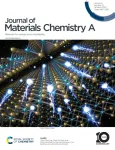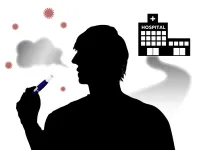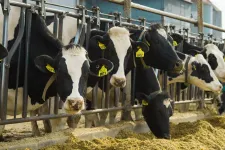(Press-News.org) Peer-reviewed / Observational and modelling study / People
Four-fold variation in standardised COVID-19 death rates across US states between January 2020 and July 2022 – with death rates lowest in Hawaii, New Hampshire, and Maine and highest in Arizona, Washington, DC, and New Mexico.
COVID-19 exploited and compounded existing local racial inequities, health disparities, and partisan politics, resulting in a disproportionate burden of COVID-19 on communities of colour and in states that voted heavily Republican in the 2020 presidential election.
No link otherwise between state governors' political affiliation and COVID-19 death rates.
States that imposed more vaccine and mask mandates experienced lower infection rates but tended to have worse employment rates and student test results, yet did not fare worse economically.
Authors call for clear, transparent, and timely communication of findings to rebuild public trust in public health and the future pandemic response.
The most comprehensive state-by-state analysis of the impacts of COVID-19 across the USA, published today in The Lancet, reveals the underlying reasons why the pandemic has played out in vastly different ways across the country.
Although the USA has the largest economy, spends more on health care than any other country, and was ranked as best prepared for a pandemic in the Global Health Security Index in 2020 (data collected prior to the pandemic), it maintains the highest number of recorded COVID-19 deaths and one of the highest per capita fatality rates from COVID-19 globally. But the pandemic did not impact US states equally.
The new analysis finds that between January 1, 2020, and July 31, 2022, cumulative COVID-19 death rates varied widely across the USA, with Hawaii and New Hampshire having the lowest standardised rates (adjusted for age and comorbidities; 147 and 215 deaths per 100,000, respectively) and Arizona and Washington, DC having the highest (581 and 526 deaths per 100,000, respectively).
"The tragic human toll of the COVID-19 pandemic in the USA challenged conventional assessments of pandemic preparedness and exposed existing vulnerabilities in our societal fabric that were not identical across states," says co-lead author Emma Castro, a researcher at the Institute of Health Metrics and Evaluation (IHME), USA. "Even after accounting for age and underlying illnesses, we observed a nearly four-fold difference in COVID-19 death rates across states, suggesting that the country as a whole could have performed much better. Examining how specific states fared and identifying commonalities of states that performed well offers important insights about how we can and must respond better to this and future pandemic threats." [1]
The researchers stress that states with the lowest standardised COVID-19 death rates came from different geographies and partisan influence. And the same is true for the states with the highest standardised COVID-19 death rates.
The study is the first time researchers have comprehensively examined the driving forces behind wide variations in SARS-CoV-2 infections and COVID-19 deaths across all states over a lengthy period and adjusted for factors outside policymakers' immediate control (e.g., age, population density, key comorbidities).
Using state-level data from public databases [3], researchers analysed government policy responses and population behaviours (e.g., mask use, vaccination, mobility) in all 50 US states and Washington, DC, from January 1, 2020, to July 31, 2022, to assess states' efforts in mitigating the impact of SARS-CoV-2 infections and COVID-19 deaths, and whether better COVID-19-related outcomes offset economic, educational, and employment losses.
Results of this analysis were used to answer five-key policy questions that have emerged during the pandemic around wide state-by-state variations in COVID-outcomes: 1) the role of social, racial, and economic inequities; 2) whether states with greater health care and public health capacity performed better; 3) the influence of politics on the results; 4) whether states that imposed more policy mandates and sustained them longer did better; and 5) whether there were trade-offs between a state having fewer cumulative SARS-CoV-2 infections and total COVID-19 deaths and better economic and educational outcomes.
COVID-19 has magnified existing social, economic, and racial inequities
The analyses found that US states with higher poverty, lower rates of educational attainment, less access to quality health care, and lower levels of interpersonal trust (trust in others) experienced disproportionately higher rates of SARS-CoV-2 infections and COVID-19 deaths.
This set of factors was found to exist in states where COVID-19 has done the greatest damage—those with the highest populations of people who identify as Black and where high percentages of people voted for the Republican presidential candidate in the 2020 election, such as Texas, Mississippi, Georgia, and Alabama.
"What is clear from our study is that COVID-19 exploited and compounded existing local racial inequities, health disparities, and partisan politics to create a syndemic—a combination of local factors that interact, increasing the burden of disease from this pandemic and the likelihood of poor outcomes," says co-lead author Thomas J. Bollyky, Director of the Council on Foreign Relations' Global Health Program in the USA. "This combination of racial disparities and politics explains a large part of why the USA particularly struggled in the pandemic." [1]
In addition, the study found that while states with greater access to quality health care tended to perform better, with, on average, fewer COVID-19 deaths and SARS-CoV-2 infections, higher state public health spending and more public health personnel per capita were not associated with better health outcomes, at the state level.
States' political orientation played a nuanced role in COVID-19 outcomes
The analysis suggests that partisan politics played a nuanced role in state-level COVID-19 outcomes. No association was found between the political affiliation of the state governor and death rates from COVID-19. Five of the 10 states with the lowest standardised death rates—Vermont, New Hampshire, Maryland, Ohio, and Nebraska—were Republican-led, with the other five best-performing states led by Democrat governors. However, a key predictor of infections and total COVID-19 deaths was the share of the state that voted Republican in the 2020 presidential election.
Political partisanship also influenced local decisions about how Americans use the health system. In states that voted heavily Democratic in the 2020 presidential election, vaccine coverage was associated with stronger health systems (e.g., more health workers and physicians, fewer uninsured). In heavily Republican states, however, the analysis found no link between health system factors and the adoption of protective behaviours, such as vaccination.
"Importantly, our results suggest that the more robust a health system, the better a state performed in the pandemic, but only in states where the public was willing to make use of health care services for vaccination or to get early treatment for their conditions," explains senior author Dr Joseph Dieleman from IHME. "Moving forward, it is critical for public health officials, as well as other leaders – elected officials, community organisers, leaders of religious institutions – to work together to ensure the key messages about accessing care and preventative measures reach all populations and is more broadly adopted." [1]
Trade-offs between public health restrictions, jobs, and student test results
States that imposed more protective mandates, such as those encouraging mask use, mobility restrictions, and higher vaccination rates, and maintained them for longer, experienced lower infection rates. Only vaccine coverage had a strong association with state variation in COVID-19 death rates.
"Our estimates suggest that use of mandates and gathering restrictions was statistically associated with lower infection rates, but not death rates," says Dieleman. "Many other factors impact death rates. Ultimately our public health policies seem capable of preventing transmission, but other societal factors like poverty, education attainment, and access to high-quality healthcare might have muddled the response and led to death rates being highest in some states that didn't have tremendously high infection rates." [1]
New estimates suggest that if these associations are causal, then the state with the lowest use of protective mandates on masks and social distancing (Oklahoma) had the same policy response as the state with the most use (California), it would have experienced almost a third (32%) fewer infections. Similarly, estimates suggest that if the state with the lowest vaccine coverage (Alabama) adopted the vaccine uptake of the state with the highest vaccination coverage (Vermont), cumulative infections (30%) and deaths (35%) would have been cut by around a third.
To determine each state's economic situation, the researchers looked at employment figures and state gross domestic product (GDP output). They found that Hawaii, Washington DC, and New York had the largest reduction in employment while Wyoming, Hawaii, and New Mexico tended to fare worse economically.
Despite wide variation across the USA in the relative decline in local GDP, employment rate, and math and reading test scores, the study found no evidence of a trade-off between a state having a relatively strong economy or a good health performance in the pandemic. Specifically, the analysis found no links between GDP and most health mandates, lower infections, or fewer total deaths in the pandemic.
"Our results suggest that the local economy was neither hindered nor helped by the differences in the policy mandates that states adopted to reduce COVID-19 deaths or slow the spread of SARS-CoV-2 infections," says Bollyky. "For example, maintaining mask mandates for longer did not translate, on average, into a state experiencing a greater reduction in GDP than its less restrictive neighbours." [1]
Dieleman adds "Most states had reductions in economic activity during the pandemic, especially in 2020, but those reductions were not systematically related to state policy mandates or COVID infection and fatality rates. When looking at the pandemic as a whole, many things, including federal policy responses, were put in place to prevent the economy from doing any worse than it did. And the sectors that did do the worst, like transportation and leisure, make up a relatively small part of the economy, even though they make a disproportionately large fraction of the workforce." [1]
But there was a trade-off with jobs. Mandated restaurant closures and increased mask use were associated with larger falls in employment rates. Likewise, less mask use, more infections, and greater COVID-19 deaths were closely tied with higher employment. The study estimates that, on average, there were 1,574 additional infections per 10,000 population with each percentage point increase in the employment rate.
This suggests that job losses may have been less severe in states where the population was more willing to risk contracting COVID-19 and participate in out-of-home activities like retail shopping and dining out.
One of the most controversial topics related to the COVID-19 pandemic, state-level school closures, did not appear to play a role in lower student test results across most US states. Instead, the study suggests that declines in fourth-grade maths scores in the National Assessment of Educational Progress (NAEP) exam were linked with several policy mandates, including increased mask use and vaccine mandates for state and school employees.
"It's possible that in states that were more cautious about COVID-19 transmission, more parents elected for remote schooling. Another possibility is that mask and vaccine mandates impacted school attendance and closures in ways our study was not designed to measure," explains Bollyky. "Our immediate priority should be helping support the lowest-achieving students catch up and addressing US educational achievement gaps, which have widened substantially over this pandemic. In future health crises, it is critical to developing job retention schemes and better educational policies that can mitigate these societal trade-offs." [1]
Rebuilding public trust with clear, transparent, and timely communication
The authors stress that understanding the contexts in which infections and deaths were disproportionately clustered in this pandemic will be crucial in the design and targeting of clinical and policy interventions to ensure better health outcomes in future crises. For instance, policies such as paid family and sick leave and expanded Medicaid and insurance coverage would help people on lower incomes get vaccinated and obtain effective treatment. And states investing in community-based organisations, such as local clinics or faith-based institutions, to continue to engage in ongoing public health promotion, build relationships with constituents, and encourage vaccine uptake generally among partisan and marginalised groups.
"To rebuild trust in public health and the future pandemic response, we must improve transparency around the political contexts and social, economic, and racial inequities that have magnified US struggles in this crisis, and to be honest in identifying where the economic and educational trade-offs may have been too great to justify the protective measures adopted," says Bollyky. "Our results suggest that those US states that mitigated those structural inequalities, deployed science-based measures, and mobilised the solidarity that exists in American society were able to match the best-performing nations globally." [1]
NOTES TO EDITORS
This study was funded by Bill & Melinda Gates Foundation, J Stanton, T Gillespie, J and E Nordstrom, and Bloomberg Philanthropies. A full list of authors and their institutions is available in the paper.
[1] Quotes direct from authors and cannot be found in text of paper.
[2] US state data were extracted from public databases, including COVID-19 infection and mortality estimates from the IHME COVID-19 database; Bureau of Economic Analysis data on state gross domestic product (GDP); Federal Reserve Economic Data on employment rates; National Center for Education Statistics data on student standardised test scores; National Center for Education Statistics data on student standardised test scores; and US Census Bureau for state race/ethnicity data.
The labels have been added to this press release as part of a project run by the Academy of Medical Sciences seeking to improve the communication of evidence. For more information, please see: http://www.sciencemediacentre.org/wp-content/uploads/2018/01/AMS-press-release-labelling-system-GUIDANCE.pdf if you have any questions or feedback, please contact The Lancet press office pressoffice@lancet.com
IF YOU WISH TO PROVIDE A LINK FOR YOUR READERS, PLEASE USE THE FOLLOWING, WHICH WILL GO LIVE AT THE TIME THE EMBARGO LIFTS: http://www.thelancet.com/journals/lancet/article/PIIS0140-6736(23)00461-0/fulltext
END
THE LANCET: Largest US state-by-state analysis of COVID-19 impact reveals the driving forces behind variations in health, education, and economic performance
2023-03-24
ELSE PRESS RELEASES FROM THIS DATE:
Risk of cervical cancer twice as high in women with mental illness
2023-03-24
Women with mental illness, neuropsychiatric disability, or substance abuse are less likely to go for gynaecological smear tests for cervical cancer and run more than twice the risk of developing the disease. The findings are presented in The Lancet Public Health by researchers from Karolinska Institutet, who stress the importance of proactively approaching these women as a preventative measure against cervical cancer.
In May 2020, the WHO approved a global strategy for eliminating cervical cancer as a women’s health problem. Part of the strategy is a requirement that 70 percent of women are screened for the disease at least once before age 35 and twice before ...
Poorest children have worse health and educational outcomes in adolescence
2023-03-24
Generation Z children born into the poorest fifth of families in the UK are 12 times more likely to experience a raft of poor health and educational outcomes by the age of 17 compared to more affluent peers, finds a new report led by UCL researchers.
The study, published in The Lancet Public Health, used data from the Millennium Cohort Study, a major study of more than 15,000 children born after the new millennium (September 2000 - January 2002) who are now in their early 20s.
Researchers collected data on five adverse health and social outcomes in adolescents aged 17 years, which are known to limit life chances: ...
More support needed for children with disabilities using the Internet
2023-03-24
Children with disabilities need better support to manage their online lives and potential online risks, according to new research led by the University of East Anglia (UEA).
For children with disabilities, being online and part of a well-connected community can have huge benefits. However, children with disabilities will encounter more online risks, and these can escalate more quickly than for their peers.
The research shows that extra support from professionals such as teachers, youth workers and speech and language therapists does not always happen when they are learning, playing, and socialising on the Internet. It also highlights how this impacts on the ability ...
Giant volcanic ‘chain’ spills secrets on inner workings of volcanoes
2023-03-24
Volcanic relics scattered throughout the Australian landscape are a map of the northward movement of the continent over a ‘hotspot’ inside the Earth, during the last 35 million years.
University of Queensland researchers Dr Tamini Tapu, Associate Professor Teresa Ubide and Professor Paulo Vasconcelos discovered how these relics reveal the inner structure of the Australian volcanoes became increasingly complex as the hotspot’s magma output decreased.
Dr Al-Tamini ...
Simplified calculations reproduce complex plasma flows
2023-03-24
Overview
Accurate and fast calculation of heat flow (heat transport) due to fluctuations and turbulence in plasmas is an important issue in elucidatingthe physical mechanisms and in predicting and controlling the performance of fusion reactors.
A research group led by Associate Professor Motoki Nakata of the National Institute for Fusion Science and Tomonari Nakayama, a Ph.D student at the Graduate University for Advanced Studies, has successfully developed a high-precision mathematical model to predict the heat transport level. This was achieved by applying a mathematical optimization method to a lot of turbulence and heat transport ...
KERI-KIT develop an optimal SiS2 production technology to boost ASSB performance
2023-03-24
A team led by Dr. Ha Yoon-Cheol, a Principal Researcher of Next Generation Battery Research Center at the Korea Electrotechnology Research Institute (KERI) and Dr. Cheol-Min Park, a Professor of School of Materials Science and Engineering at Kumoh National Institute of Technology (KIT), has developed a low-cost production technology for silicon disulfide (SiS2) for solid-state electrolytes (argyrodite-type) that has potential to accelerate the commercialization of all-solid-state batteries (ASSBs).
ASSBs replace the liquid-state electrolytes that transfer ions between the anode ...
Heated tobacco products make SARS‑CoV‑2 infection and severe COVID‑19 more likely
2023-03-24
Heated tobacco products—an alternative to traditional cigarettes, similar to e-cigarettes or vapes—do not burn tobacco leaves, but rather allow users to inhale the vapor produced by heating the tobacco leaves. Users choose heated tobacco products to avoid the smoke and odor of burnt tobacco as well as the expectation that they pose fewer health risks than traditional cigarettes. However, the long-term health effects of heated tobacco products, particularly the new risk of SARS-CoV-2 infection, have not been clarified.
Addressing this concern, ...
Tiny nanoparticle could have big impact on patients receiving corneal transplants
2023-03-24
Corneal transplants can be the last step to returning clear vision to many patients suffering from eye disease. Each year, approximately 80,000 corneal transplantations take place in the U.S. Worldwide, more than 184,000 corneal transplantation surgeries are performed annually.
However, rejection rates for the corneal grafts can be as high as 10%. This is largely due to poor patient compliance to the medications, which require frequent administrations of topical eyedrops over a long period of time.
This becomes especially acute when patients ...
Climate change threatens global fisheries
2023-03-23
The diet quality of fish across large parts of the world’s oceans could decline by up to 10 per cent as climate change impacts an integral part of marine food chains, a major study has found.
QUT School of Mathematical Sciences researcher Dr Ryan Heneghan led the study published in Nature Climate Change that included researchers from the University of Queensland, University of Tasmania, University of NSW and CSIRO.
They modelled the impact of climate change on zooplankton, an abundant and extremely diverse group of microscopic animals accounting for about 40 per cent ...
Dairy sector boasts 100 years of successful herd data collection
2023-03-23
URBANA, Ill. – The U.S. dairy industry operates a comprehensive data collection program that records herd production information from farmers nationwide. The program provides crucial input for cattle breeding and genetics, and its cooperative structure ensures benefits for producers and scientists alike. A new study from the University of Illinois explores the program’s century-old history, highlighting its relevance for modern agriculture and digital data collection.
“The National Cooperative Dairy Herd Improvement Program (NCDHIP) is an interesting case study because it illustrates how to translate the benefits ...






